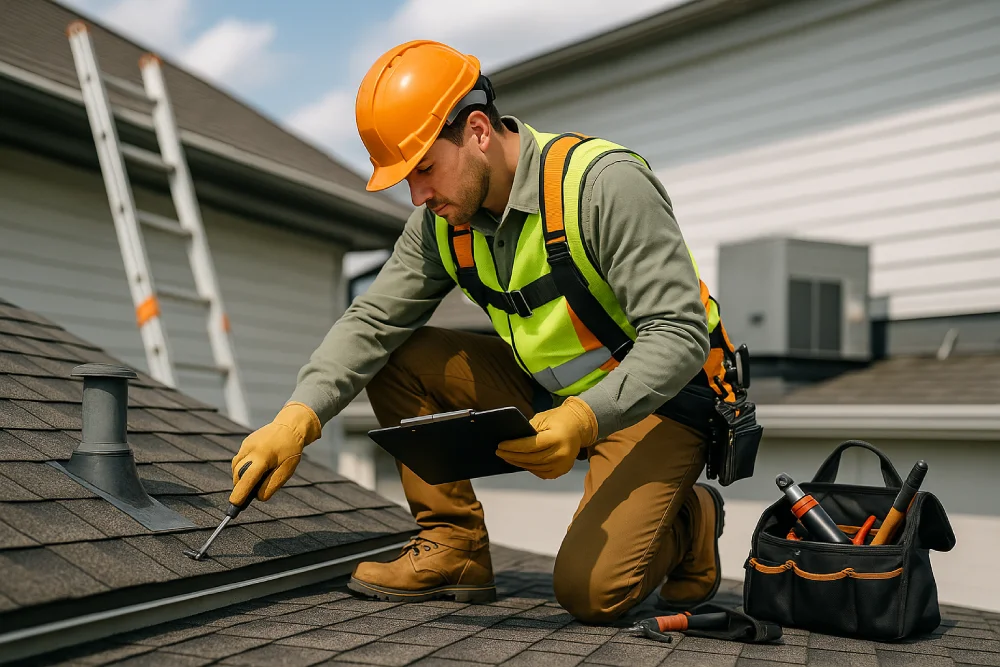
A roofing maintenance plan includes thorough inspections, regular repairs, and safety measures to guarantee the roof's integrity. It covers assessments for deterioration, scheduled maintenance, and specific care based on roof types like asphalt and metal. However, typical exclusions involve wear and tear from age, interior damage from leaks, and damages from natural disasters. Understanding these details is vital for homeowners to avoid unexpected expenses. Locating further details about coverage and claims processes can improve protection and planning.
Comprehensive Roof Inspections
When maintaining a roof, conducting thorough inspections is essential to ensuring its longevity and performance. Comprehensive roof inspections begin with visual assessments, where inspectors look for signs of deterioration, such as cracking, curling, or missing shingles.
They also check for moss, algae, and debris accumulation that could lead to drainage issues. Structural components, like rafters and beams, are assessed for stability and damage.
Additionally, thermographic scans can identify hidden moisture or heat loss, providing profound insights into potential problems. Inspectors also guarantee gutters and downspouts are free from clogs and functioning correctly.
By documenting findings, homeowners gain a clear comprehension of their roof's condition, allowing them to address issues proactively and maintain their roof effectively. Regular inspections by a professional roof inspection company can help prevent major expenses from arising due to minor problems, as they often utilize quality-first approaches to protect homes and businesses.
After conducting a thorough roof inspection, the next step in preserving a roof involves regular repairs and maintenance. This process is essential for guaranteeing warranty compliance and extending the roof's lifespan.
By budgeting for longevity, property owners can allocate funds specifically for necessary repairs, allowing for prompt action without financial strain. Regular inspections often reveal minor issues, which, if addressed early, can prevent major problems down the line. Seasonal adjustments and routine checks help identify wear and tear, while using quality materials in repairs assures durability.
Additionally, maintaining detailed records of repairs aids in future budgeting and supports warranty and insurance claims, nurturing an effective maintenance plan that is both sustainable and efficient. Regular inspections are a key component of a successful roof maintenance plan. Moreover, partnering with professionals who have decades of hands-on experience can ensure that all aspects of roof maintenance are handled with expertise.
When considering roof maintenance, understanding that different materials require unique care is essential. Asphalt shingle roofs need regular checks for any cracked or missing shingles, particularly after severe weather events. Metal roofs necessitate inspections focused on rust and sealant integrity to safeguard long-lasting performance. Regular maintenance extends roof lifespan and ensures year-round performance, making it crucial for all roof types. Additionally, working with professionals who prioritize craftsmanship and communication can greatly enhance the effectiveness of your maintenance plan.
Asphalt shingles, a popular roofing choice for many homeowners, require careful consideration based on the specific type of roof they are installed on. Regular inspections are vital to identify damaged or missing shingles, as neglect can lead to leaks and structural damage. A thorough ventilation assessment is necessary to maintain energy efficiency impacts, preventing heat buildup in the attic that can cause shingle deterioration.
Metal roof inspections are instrumental for maintaining the longevity and performance of various roof types, especially given the unique characteristics of metal materials. Regular inspections help identify issues such as rust, corrosion, and loose panels, which can compromise roof integrity. Safety precautions, including the use of sturdy ladders and restraints, are essential during these assessments.
Additionally, controlling moisture by clearing debris is paramount for preventing leaks and ensuring warranty compliance. Documentation of findings, using notepads or cameras, supports proactive maintenance strategies. Scheduling inspections annually, or after severe weather, promotes timely repairs and enhances overall roof durability. By addressing these considerations, homeowners can safeguard their investments and extend the life of their metal roofs.
Access control and safety measures are essential components of any effective roofing maintenance plan. These strategies not only protect workers but also guarantee compliance with industry standards. Key elements include:
To meet worker certification requirements, training must be conducted by qualified instructors, confirming all workers understand the risks and safety measures in place. Regular audits of access and safety records help to maintain compliance and mitigate legal liability. By implementing these practices, roofing maintenance plans can significantly enhance safety and efficiency on the job site.
Advanced inspection technologies are revolutionizing the way roofing maintenance is conducted, enhancing both safety and efficiency. Drones, for instance, capture high-resolution images, allowing for thorough assessments without physical access to the roof, significantly reducing risks for inspectors. Thermal imaging detects hidden moisture and insulation issues, while moisture meters provide precise measurements of dampness.
These technologies facilitate extensive data analysis, helping to identify potential problems early. AI-powered predictive maintenance systems use historical data for risk prediction, enabling timely repairs before major damage occurs. Together, these advanced tools not only improve inspection accuracy but also support proactive maintenance strategies, ultimately extending the lifespan of roofs and ensuring optimal performance for property owners.
As seasons change, maintaining the roof becomes essential to protecting a home from potential damage. Seasonal and event-related care guarantees effective moisture management and prepares homeowners for unexpected weather challenges. Regular inspections and maintenance help identify issues before they escalate.
Homeowners should prioritize gutter cleaning, attic ventilation checks, and the removal of snow after winter storms. By implementing these practices, they can enhance roof longevity and safeguard their investment. A proactive approach to seasonal maintenance will ultimately lead to a more secure and resilient home.
Many homeowners may not realize that a roofing maintenance plan often comes with specific exclusions that can impact their coverage. Key exclusions include pre-existing conditions, which refer to issues that existed before the plan started.
Additionally, wear and tear from age or exposure is typically not covered. Homeowners should also note that consequential damages, such as interior damage from leaks, are generally excluded from maintenance plans. Natural disasters, or acts of God, often require separate insurance.
Moreover, neglecting routine maintenance tasks can lead to denied claims. Comprehending these exclusions is essential for homeowners to guarantee they have adequate protection and to avoid unexpected expenses related to roof maintenance and repairs.
A solid roofing maintenance plan is key to maximizing the lifespan and efficiency of your roof. By scheduling regular inspections and performing timely repairs tailored to your specific roof type, homeowners can take proactive steps to safeguard their investment. It’s equally important to understand what these plans typically do not cover, as this knowledge helps set realistic expectations and fosters clear communication.
When it comes to roofing maintenance, a comprehensive approach builds a foundation for a secure and durable solution, ultimately providing homeowners with peace of mind for years to come. Remember, at TriStar Built, we pride ourselves on being a locally owned and insured construction company in North Texas. Our commitment to quality craftsmanship, long-term relationships with trusted subcontractors, and a client-focused service model ensures that your roofing needs are met with integrity and care.
A roof maintenance plan typically includes scheduled inspections, minor repairs, and documentation of problem areas like roof vents, flashings, and penetrations such as skylights and vent pipes. A good roof maintenance program will also monitor the roof surface and roof deck, helping to identify issues before they become major repairs. These plans are key to maintaining the performance of your roof and extending its lifespan.
You should inspect your roof at least twice a year, ideally in the spring and fall. A yearly inspection—and after severe weather—is a vital part of an annual roof maintenance plan. This proactive approach helps identify nail pops, loose flashings, clogged gutters, or signs of roof damage early, helping you avoid costly repairs down the line.
Most roof maintenance plans do not cover roof replacement, structural changes, roof damage from natural disasters, or interior water damage caused by leaks. Also, issues due to neglect—such as moss or alga buildup or lack of attic ventilation—are usually not covered. Knowing these exclusions helps protect your investment and plan for additional insurance coverage if needed.
Professional maintenance by a qualified roofing contractor ensures that inspections and repairs made are up to code and based on the roof type, whether it’s asphalt shingle, metal, or modified bitumen. A professional roof assessment includes checking soffits, sealants, and attic ventilation and insulation, giving you peace of mind that your roof is in good condition.
A regular maintenance program helps maintain your roof, reduce energy bills, and prolong your roof’s lifespan. It’s especially valuable for commercial property and building owners, where proactive care lowers risks of emergency repairs and minimizes disruptions. A roof maintenance checklist and maintenance reports can also support warranty and insurance claims.
Yes, a roof maintenance plan is essential for both homes and commercial roof systems. While materials and roof type vary, regular maintenance helps prevent ice dams, improves ventilation and insulation, and ensures that building maintenance aligns with long-term value goals for any property owner or commercial property.
Absolutely. A comprehensive roof inspection plan should include checking around skylights, vent pipes, and other penetration points. These are common problem areas where leaks begin. Maintaining the integrity of these elements helps prevent interior damage and supports the overall health of your roofing system.
Attic ventilation and insulation are essential components of any annual roof maintenance effort. Proper airflow prevents heat and moisture buildup that can damage asphalt shingles and increase the risk of mold or ice dam formation. It also improves energy efficiency and enhances the appearance and can increase the resale value of your home.
Yes. By addressing minor issues early—like cracked shingles or clogs in drainage—you avoid major repairs that cost far more. Regular roof care is a cost-effective strategy that helps prevent surprises, reduces emergency repair costs, and ultimately saves you money in the long run.
The right roof maintenance plan depends on your roof type, budget, and goals (such as whether you plan to sell soon or own a commercial property). Look for a roofing contractor offering a detailed scope, maintenance inspection, and clear terms. A great maintenance plan should include documentation, repair history, and options for emergency repairs when needed.

Whether you’re remodeling a home, expanding a business, or starting from the ground up, TriStar Built is here to guide you every step of the way. With a focus on craftsmanship, communication, and results that last, we make the construction process clear, smooth, and worth every investment.

LOCATION: 2126 James Street, Denton, TX 76205
PHONE: (940) 381-2222
© 2025 TRISTAR BUILT - ALL RIGHTS RESERVED | WEB DESIGN & SEO BY: Authority Solutions®